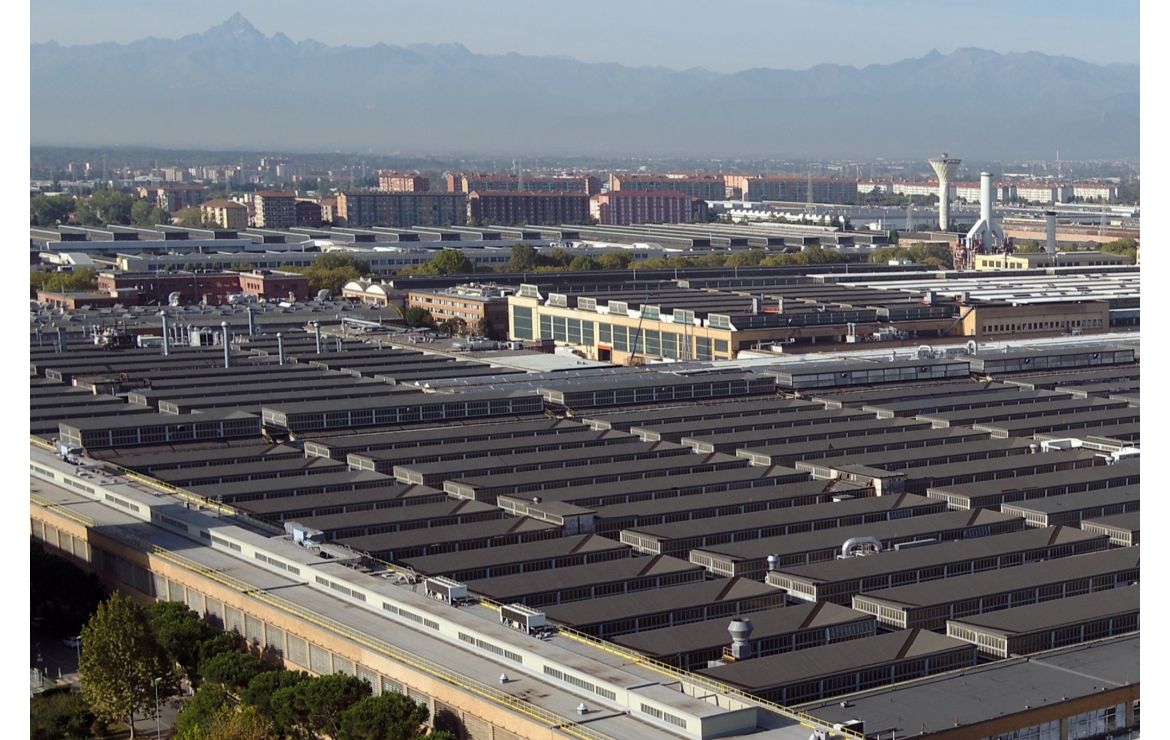MILAN – Stellantis is renovating the historic former Fiat Mirafiori plant in Turin, Italy, to manufacture electrified dual-clutch transmissions (eDCT) for hybrid and plug-in hybrid vehicles.
Production of eDCTs at the 21.5 million sq.-ft. (2 million sq.-m) plant is to begin in second-half 2024. Annual output eventually will reach 600,000 units.
Stellantis also plans a parts-recycling operation at Mirafiori (https://www.wardsauto.com/industry-news/stellantis-circular-economy-hub-will-research-sustainability).
The new eDCT assembly line will be set up with Belgium-based Punch Powertrain (with whom Stellantis has a joint venture, Punch Powertrain PSA e-Transmissions Assembly).
Together with the Stellantis transmission plant in Metz, France, which is developing large-scale serial production of its novel hybrid DCT, the two facilities are expected to manufacture 1.2 million eDCTs annually, supplying Stellantis manufacturing sites across Europe.
Stellantis CEO Carlos Tavares says the automaker is investing a “double-digit” million-euro figure in the gearbox upgrade at Mirafiori, without disclosing a precise figure.
Punch Powertrain claims its patented DCT transmission designs are cost-effective, compact and modular, offering manufacturing flexibility. A key feature is high component similarity, allowing the same transmission design to be used for its three versions: an eDCT for a mild-hybrid 48V motor; a high-voltage plug-in hybrid motor DCT; and a combustion-engine model.
For EV models, this means different electrification variants can fit in front-transverse platforms with minimal investment, Stellantis says, adding, “the high commonality of components (greater than 90%) between the three variants offers a clear economy of scale benefit in component cost.”
Giacomo Rossi, principal consultant-Mobility Europe at Frost & Sullivan, comments: “Europe is a pioneer in the transition toward electrified mobility and emissions reduction targets, and so it makes sense that Stellantis will begin this journey here and not in the U.S. market, which is less mature in? regards to EV adoption and overall sustainability awareness.”
Rossi expects the knowledge and best practices acquired from Mirafiori (pictured, below) will help Stellantis extend similar transmission projects beyond Europe.

One benefit of locating the e-transmission plant in Turin is collaboration with Turin Polytechnic, which signed a memorandum of understanding with Stellantis in 2022. The automaker is funding €7.4 million ($8.1 million) in R&D projects in mobility, sustainability and the circular economy over four years.
Project coordinator Andrea Tonali tells Wards that seven research projects have been activated on improved electrification, autonomous driving, connectivity, digitalization of manufacturing processes and factory processes supporting the circular economy.
“One project, for example, seeks to improve energy accumulation in EV batteries aiming to improve energy density and recharging speeds,” he says. “Another will seek to develop strategies to optimize energy use of EVs; others will focus on how to lightweight certain EV- and hybrid-car components, through, for example, active suspensions, and recover energy that would otherwise be lost.”
The eDCT line will complement plans to transform Mirafiori into Stellantis’ principal “Circular Economy Hub” run by the company’s newly launched Circular Economy Business Unit.
The hub will be the automaker’s first and main European dismantling and recycling hub where vehicles and vehicle components from across the continent will be taken apart and refurbished or reused in new models.
The project is a key part of plans by the automaker to quadruple extended-life revenues for parts and services and multiply recycling revenues tenfold by 2030 compared with 2021. The Mirafiori recycling hub will feature three main activities: vehicle reconditioning, vehicle dismantling and parts remanufacturing or recycling.
The unit will build on expertise acquired through the 2016 purchase of a stake by PSA Peugeot-Citroën Group (now part of Stellantis) in the Aramis Group, a European leader in the online multi-brand purchase and sale of used cars. Aramis today has eight in-house refurbishing centers across western and central Europe. In the future Stellantis says it envisions setting up a network of regional hubs for such work, complemented by “local loops” to maximize efficiency.
Stellantis will be one of the first global OEMs to directly manage its own parts recycling processes and thus “the changes underway at Mirafiori are exciting and will be a positive development for both Italy and Europe automotive supply chains,” Rossi says.
Mirafiori certainly has space for both the transmission and recycling initiatives, Rossi says, noting that for years the site “has been underutilized, home to few production lines at present, including the 100%-electric Nuovo Fiat 500.”
The hub could generate new revenue, he says, “leveraging the existing network of highly skilled businesses, professionals and workers in Turin…experts in combustion-engine mechanics and car assembly who can help build parts and handle recycling with appropriate retraining.”





